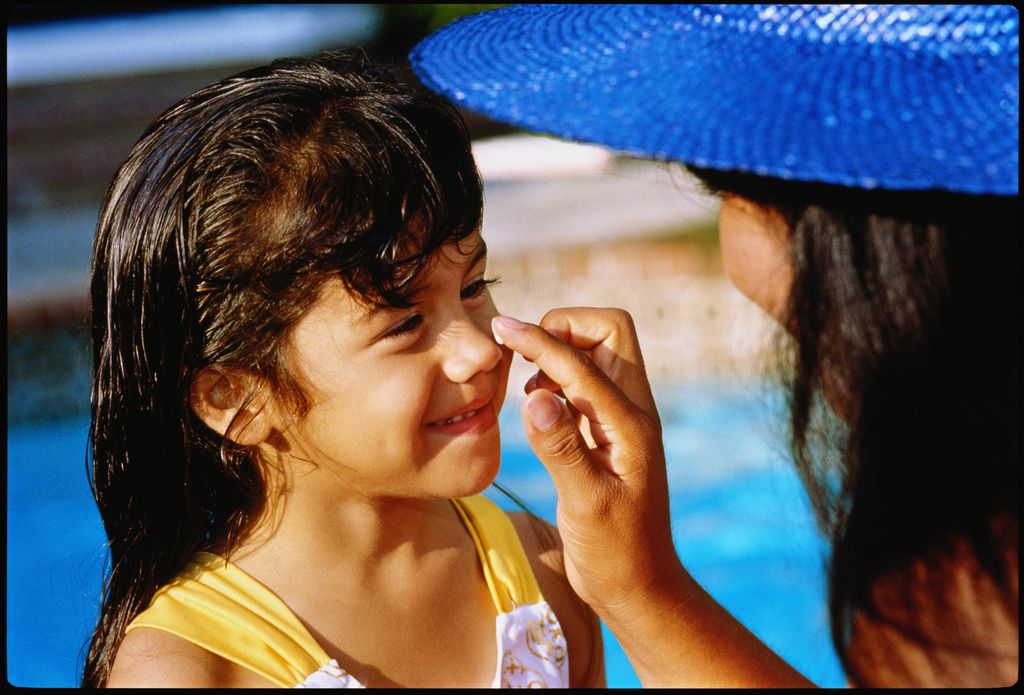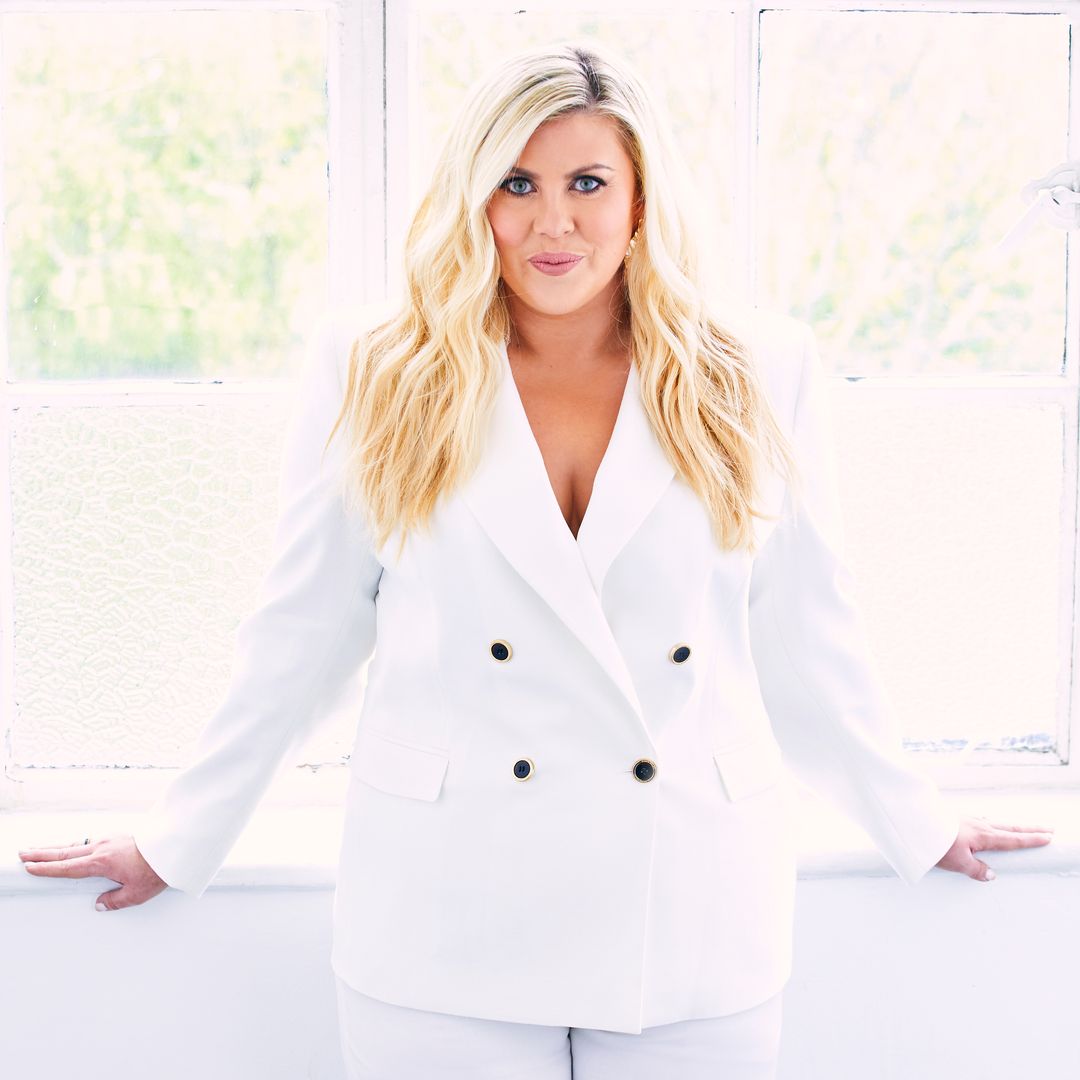This weekend is set to be scorching in many parts of England with temperatures expected to hit 30C, which will be hotter than Ibiza.
If you are planning on being outdoors with your children, protecting them from the hot sun with the right sunscreen, clothing and shade is essential for their health.
Consultant Dermatologist Dr. Natalia Spierings, author of Skintelligent: What you really need to know to get great skin and dermatologist on Channel 5’s Skin A&E, tells HELLO! about the golden rules of sun protection for children…
At what age should children start wearing sunscreen?
Dr Natalia advises: "So there are two major issues here: the first is that sun exposure is the main source of vitamin D and it is absolutely essential for healthy bone development in children. The second issue is that sunburn in childhood is a recognised risk factor for skin cancer in older age.
"So how do you balance the need for children to be protected from sun damage while at the same time allowing them to exercise, play outside and produce sufficient levels of vitamin D?
"The best answer is not straightforward forward but here is a summary based on guidance from NICE and the British Association of Dermatologists."
- For children aged 1 year+, NICE recommends daily supplementation of 400 IU of vitamin D per day.
- NICE advises NOT to routinely monitor blood vitamin D levels in children.
- Ensure that children have an adequate dietary calcium intake (for info visit www.bda.uk.com)
Safe sun exposure:
- Prolonged exposure to strong sunlight (leading to burning or tanning) does NOT lead to excess production of vitamin D, because your body has a mechanism for destroying excess vitamin D if it is produced.
- For optimal vitamin D production, exposure of the arms and legs (with SPF on the face) for about 5 to 30 minutes between 10 am and 3 pm twice a week is sufficient for vitamin D synthesis. However, this 5–30-minute window is wide because the exact time depends on how dark the skin is naturally, time of day, season, latitude and the person’s age (longer periods of exposure are needed for those with darker skin).
- The time needed to make sufficient vitamin D is typically short and less than the amount of time needed for skin to redden and burn. Going outside for a matter of minutes without sunscreen around midday should be enough for most people.
"I generally would not recommend exposing infants to the sun in general (keep them in cool shade, keep them covered up if exposing to sun).
"When children get a bit older and start to crawl or walk and play outside, then the first line of defence should be protective clothing followed by a minimum of SPF 30 and good UVA protection. Technically, there is no exact age at which sunscreen should be used.
MORE: 7 fun gardening activities for children
Should my child wear protective clothing as well as sunscreen?
"Children should always wear protective clothing as the first line of defence against sun damage rather than SPF. By this, I mean clothing, hats and sunglasses. You use sunscreen to ‘boost’ this protection.
"Focus on covering up and keeping children out of direct sun exposure, especially during peak sunny times in the midday."
What is the best way to apply sunscreen on children?
"This is where sprays and sticks can become very helpful.
"Sunscreen sticks are like deodorant sticks and you can make it a game by having your child roll the ‘sunscreen stick’ everywhere his or her skin is going to be exposed to sun. Sticks are great because they provide fairly even coverage without the need to rub it in and they are generally not too slimy.
"Sprays are another option but you still have to rub them into the skin. The good thing about the sticks is that they can be pure mineral sunscreen sticks which is great because they go on white so you can see where the child has applied it and where he or she may have missed a spot."
Could you explain the difference between sun creams?
"I prefer physical or mineral sunblocks made of zinc oxide or titanium dioxide as they don’t photodegrade in sun like chemical sunscreens and are much less likely to cause skin irritation. But they can be hard to use from a cosmetic perspective as they can be a bit chalky and leave a white cast.
"Chemical sunscreens are perfectly adequate but do need to be reapplied every 2-3 hours with constant sun exposure in order to maintain the sun protective effect.
"SFP refers to the level of UVB protection. UVB are thought of as the ‘burning’ rays. UVA rays from the sun are the ones that cause the DNA damage and you can judge how good a sunscreen is at doing that by looking at the UVA star rating. The rating goes from 1 to 5 with 5 being the most effective."
What amount of sunscreen do children need and how do you measure it?
"The amount of sunscreen required to have the stated SPF of the one you are using takes a lot more sunscreen than you probably think!
"For an adult, it is one shot glass full (so about 35 ml) and for a toddler, it is about half that amount. The other way to measure the volume is the amount that would fill the palm of your toddler’s hand.
"Don’t forget to apply it to ears, neck and the tops of feet and hands. And of course, lips burn too so get a SPF 30 or higher lip balm and apply that. It is also useful to apply to the eyelid area.
"It is best to apply the sunscreen to the child 15 minutes before sun exposure and without their swimming costume on so you don’t miss the areas hidden under straps that may move around."
For those that have skin issues such as eczema and psoriasis, is it better to use chemical or mineral sunscreen?
"Mineral sunscreens are generally considered less irritating than chemical. but this varies from person to person.
"The most important thing is finding a sunscreen that you like to use and doesn’t irritate your skin or make it feel uncomfortable."
What are the most common misconceptions about SPF?
"That it is the most important part of protecting your skin from the sun. It’s not. The most important thing to do to protect your skin from the sun is to physically block your skin from sun exposure with clothing, hats etc.
"Avoidance comes first, then physically blocking, then sunscreen. That is the ‘hierarchy’ of sun protection. Think of sunscreen as ‘insurance.’"
Do children need to wear sunscreen daily like adults are advised to all year round?
"Probably. It is possible that children are more sensitive to the damaging effects of the sun than adults.
"However, children tend to be inside most of the day at school so on a regular daily basis for school children it may be asking too much to put on sunscreen every single morning.
"Encourage your child to wear a hat and long sleeves if they are going to play outside during the day and use sunscreen as a back-up."
Don't want to miss a story? Sign up to the Family Hub newsletter to get other stories like this delivered straight to your inbox.










